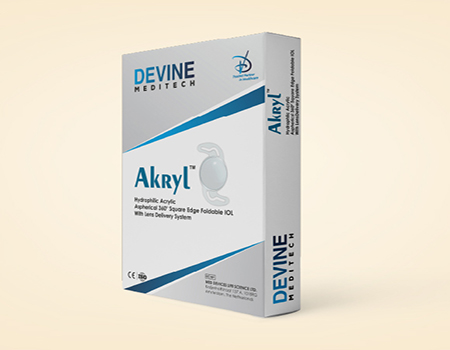
Hydrophilic IOLs take on their ultimate location inside the eye by unfolding smoothly. This is particularly helpful while implanting toric IOLs, as hydrophobic acrylic IOLs may have slower unfolding or self-adherence, which might take longer and cause rotation. Because Hydrophilic are more flexible than hydrophobic acrylic IOLs, hydrophilic IOLs can be rotated or explanted more easily if needed. Surgeons can now utilize IOLs with sophisticated technology with greater trust since possible issues can be handled more safely.
You may stop searching if you're seeking intraocular lens makers in India because Devine Meditech is the ideal location for you. It is among the most skilled locations in India for producing and distributing intraocular lenses, and it provides a large selection of goods to satisfy patients' various needs.Despite their great flexibility, hydrophilic acrylic IOLs resist rotation or displacement when the capsular bag compresses when they are properly haptically designed. Usually, it is indicated that these lenses are an excellent option for resident training because of the hydrophilic material's increased resistance to fold marks and forceps damage.
Additionally, hydrophilic IOLs' elasticity and compressibility make them a great option for microincision cataract surgery, reducing the risk of medically induced astigmatism and enhancing the predictability of unassisted visual performance following surgery. "One area where you may increase your overall predictability is if you can reduce the influence of elements we are presently unable to anticipate, like medically induced astigmatism, on refractive results.
Moreover, hydrophilic acrylic IOLs are very biocompatible, which is advantageous for diabetic or uveitic patients. When hydrophilic acrylic IOLs are implanted in these individuals, their eyes become "quieter" and their visual results are great.
Hydrophilic IOL attaches, having a higher ABBE number than hydrophobic IOLs, exhibit less light dispersion, which reduces chromatic aberration and glare. Hydrophilic acrylic IOLs are far less prone to acquire glistenings than some of the hydrophobic acrylic IOLs inserted most frequently. The hydrophobic acrylic IOLs' packed with fluid micro vacuoles have the potential to scatter light, leading to visual impairments such as dysphotopsia and reduced contrast sensitivity. They need to be explained in extreme situations.
Reports of calcification of hydrophilic acrylic IOLs in patients undergoing processes involving intracameral implantation of air or gas, such as Descemet membrane vascular keratoplasty, or Descemet stripping (programmed) endothelial keratoplasty, provided the catalyst for the proposal that hydrophilic acrylic IOLs be eliminated from the cataract surgeon's toolkit.
It was suggested that surgeons should simply discontinue using hydrophilic IOLs because they are unable to accurately forecast which individuals may require keratoplasty or pars plana vitrectomy procedures in the future. Some surgeons disagree with this proposal and believe the opacification problem has been exaggerated.
An ideal IOL is still a work in progress. Nonetheless, considering the benefits of hydrophilic IOLs, there might be a less extreme solution than outright prohibiting them. Because "we have to deal with a risk of opacification," adaptive approaches might be a good choice for some more vulnerable eyes.
Innovative methods have been created to protect IOLs from air or gas exposure that could raise the possibility of an excessive buildup of calcium. It is suggested that the anterior chamber be cleansed with saline and left in place for at least eight minutes before exposure to air or gas. Through a process of passive diffusion, the saline's existence eliminates extra calcium ions from the hydrophilic IOL. Additionally, when undergoing endothelial transplant surgery, minimizing the anterior chamber air fill, ranging from one hour to ten minutes is recommended.